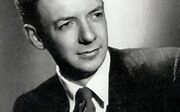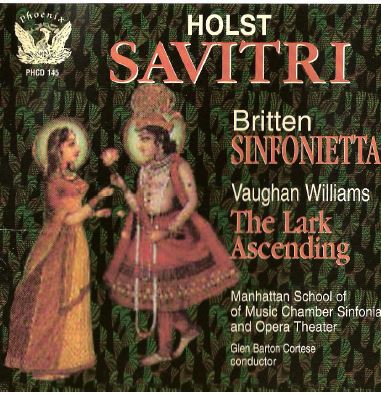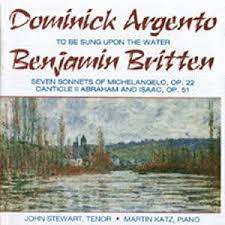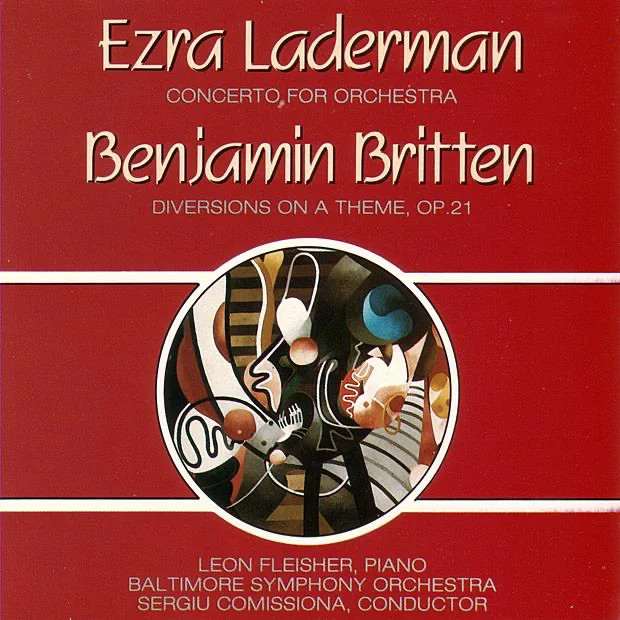
Britten, Benjamin
(Edward) Benjamin Britten 22 November 1913 – 4 December 1976 Britten was born, by happy coincidence, on St. Cecilia’s Day, at the family home in Lowestoft, Suffolk, England. His father was a dentist. He was the youngest of four children, with a brother, Robert (1907), and two sisters, Barbara (1902) and Beth (1909). He was educated locally, and studied, first, piano, and then, later, viola, from private teachers.He began to compose as early as 1919, and after about 1922, composed steadily until his death. At a concert in 1927, conducted by composer Frank Bridge, he met Bridge, later showed him several of his compositions, and ultimately Bridge took him on as a private pupil. After two years at Gresham’s School in Holt, Norfolk, he entered the Royal College of Music in London (1930) where he studied composition with John Ireland and piano with Arthur Benjamin. During his stay at the RCM he won several prizes for his compositions. He completed a choral work, A Boy was Born, in 1933; at a rehearsal for a broadcast performance of the work by the BBC Singers, he met tenor Peter Pears, the beginning of a lifelong personal and professional relationship. (Many of Britten’s solo songs, choral and operatic works feature the tenor voice, and Pears was the designated soloist at many of their premieres.) From about 1935 until the beginning of World War II, Britten did a great deal of composing for the GPO Film Unit, for BBC Radio, and for small, usually left-wing, theater groups in London. During this period he met and worked frequently with the poet W. H. Auden who provided texts for numerous songs as well as complete scripts for which Britten provided incidental music. In the spring of 1939, Britten and Pears sailed for North America, eventually settling in Amityville, Long Island, NY, where they lived with Dr. and Mrs. Wm. Mayer and their family. In 1940 he worked with Auden on what would become his first opera, actually an operetta for high schools called Paul Bunyan, based on traditional American folk characters. However, on a trip to California in 1941, he read an article by E. M. Forster on the English poet George Crabbe, planting the seed for what would eventually be Britten’s first opera, Peter Grimes. In 1942, Serge Koussevitzky became interested in Britten’s music and performed the Sinfonia da Requiem with the Boston Symphony Orchestra. Out of this association came the commission from the Koussevitzky Foundation (in memory of Koussevitzky’s late wife Natalie) for the new opera, based on Crabbe’s work The Borough. Britten and Pears worked on the scenario during their return voyage to England in March, 1942. During the early 40s, Britten produced a number of works, outstanding among them the Hymn to St. Cecilia, A Ceremony of Carols, Seven Sonnets of Michelangelo, Serenade (for tenor, horn, and strings), Rejoice in the Lamb, and the Festival Te Deum. Peter Grimes, with a libretto by Montagu Slater, was complete in 1945 and had its premiere on June 7 of that year by the Sadler’s Wells Opera Company. (Slightly over a year later, the work had its American premiere at the Boston Symphony’s summer home at Tanglewood, under the baton of Leonard Bernstein.) Other operas appeared regularly in the ensuing years: The Rape of Lucretia (1946), Albert Herring (1947), The Little Sweep (1949), Billy Budd (1951) Gloriana (1953), The Turn of the Screw (1954), Noye’s Fludde ((1957), A Midsummer Night’s Dream (1960) Curlew River (1964), The Burning Fiery Furnace (1966), The Prodigal Son (1968) Owen Wingrave (1970) [for television], and finally Death in Venice (1973). Amongst these works, the Britten catalog contains numerous other important compositions in other forms. Notable among them are: Young Person’s Guide to the Orchestra Op 34 The Holy Sonnets of John Donne, Op 35 Five Canticles (based on texts by various poets) The Beggar’s Opera Op 43 (being BB’s realization of the Gay/Pepusch work) St. Nicolas Op 42 Spring Symphony Op 44 Winter Words Op 52 Hymn to St. Peter Op 56a The Prince of the Pagodas Op 57 (Britten’s only ballet) Nocturne Op 60 Sechs Holderlin-Fragmente Op 61 Cantata Academica Op 62 Missa Brevis in D Op 63 War Requiem Op 66 for the consecration of St. Michael’s Cathedral, Coventry Symphony for Cello and Orchestra, Op 68 Cantata Misericordium Op 69 The Golden Vanity Op 78 The Building of the House Op 79 A Birthday Hansel Op 92 Phaedra Op 93 There are numerous other works including chamber music, songs, folk song arrangements, and choral works. Britten was awarded the Order of Merit in March 1965; he was created a Life Peer, Baron Britten of Aldeburgh in the County of Suffolk, in the Queen’s Birthday Honours List, June, 1976. Three years earlier, in May, 1973, he had undergone open heart surgery which left him an invalid for the remainder of his life. He was nevertheless able to attend the London premiere of Death in Venice at Covent Garden, October, 1973, and was able to travel to Germany and Italy. He died at his home in Aldeburgh, Suffolk, on 4 December 1976 and is buried in the churchyard of the Aldeburgh Parish Church. His colleagues Peter Pears and Imogene Holst, co-founders with BB of the Aldeburgh Festival, lie in adjacent graves. |





